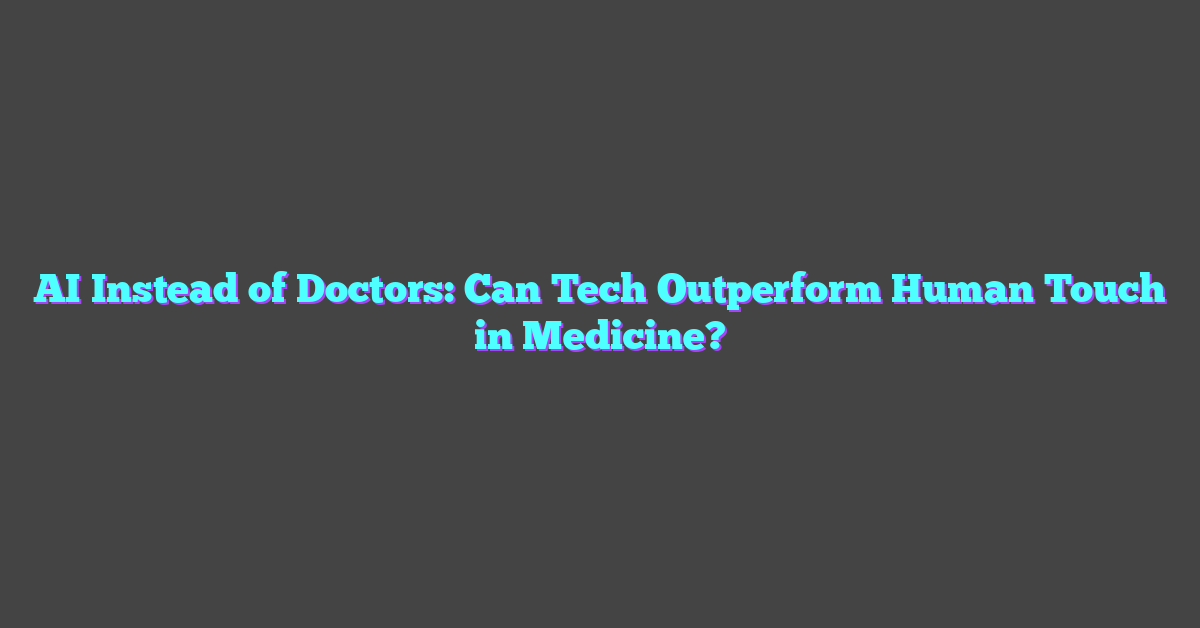Computational thinking is a problem-solving technique that aims to mimic the steps computer programmers undergo while creating programs and algorithms. It encompasses a set of skills and practices that are essential in solving complex problems across various disciplines. With the increasingly digital nature of our world, computational thinking becomes a necessity for fully participating in a computational environment.
At its core, computational thinking focuses on formulating problems in such a way that a computer can efficiently execute their solutions. This approach is inherently interdisciplinary, as it can aid in learning and understanding topics across numerous fields. Furthermore, focusing on computational thinking in educational settings helps students develop critical thinking skills and fosters a deeper understanding of the problem-solving process.
Key Takeaways
- Computational thinking is a problem-solving technique that is applicable across numerous disciplines.
- The approach focuses on formulating problems so that computers can efficiently execute solutions.
- Emphasizing computational thinking in education helps develop critical thinking and problem-solving skills.
Understanding Computational Thinking
https://www.youtube.com/watch?v=2M85juuuBRY&embed=true
Computational thinking (CT) is a problem-solving approach that involves breaking down complex problems into simpler, more manageable components. By looking at problems through the lens of CT, you can develop solutions that can be easily understood and executed by computers or humans. This way of thinking is highly beneficial in various disciplines and helps individuals to participate effectively in a computational world 1.
One of the key aspects of computational thinking is decomposition. Decomposition involves breaking down a problem or system into smaller, more manageable parts. This process enables us to better understand the individual components and identify possible solutions for each part. By tackling smaller parts of the problem, we can eventually solve the overall issue in a more efficient and effective manner.
Another important aspect of CT is abstraction, which focuses on identifying essential information and disregarding irrelevant details. Abstraction allows us to simplify problems by outlining only the necessary components and ignoring unrelated information. This skill can be extremely helpful when dealing with vast amounts of data or complex systems.

Lastly, algorithmic thinking is a significant component of computational thinking. An algorithm is a step-by-step set of instructions to achieve a specific goal or solve a problem. By developing algorithms, we can create a clear and concise plan of action to reach a solution. Algorithmic thinking can be applied to various tasks across different fields, such as computer programming, mathematics, and everyday decision-making processes.
In conclusion, understanding computational thinking is essential in today’s technology-driven world. By incorporating decomposition, abstraction, and algorithmic thinking, individuals can effectively approach and solve complex problems. This way of thinking provides valuable skills that are applicable across various domains.
The Four Pillars of Computational Thinking
Decomposition
Decomposition is the process of breaking down a complex problem into smaller, more manageable parts. This method makes it easier to understand the problem and develop effective solutions. By dividing the problem into smaller chunks, it becomes possible to approach each subtask independently and eventually combine the solutions to form a complete answer. Decomposition not only simplifies problem-solving, but also promotes a better understanding of the underlying concepts involved.
Pattern Recognition
Pattern recognition is an essential skill in computational thinking that involves identifying trends, similarities, and relationships within the data. By recognizing patterns, we can make predictions and better understand the way systems behave. Pattern recognition helps in simplifying complex problems and identifying effective solutions. For example, in programming, similar functions can be grouped together for easier navigation and debugging. This crucial skill also plays a major role in areas like data analysis, machine learning, and artificial intelligence.
Abstraction
Abstraction involves concentrating on the essential features and properties of a problem or a system, while filtering out irrelevant information. Through abstraction, we can create simple models that help us understand complex, real-world situations. In computational thinking, abstraction is used to identify the key aspects of a problem by removing unnecessary details. This process simplifies the problem and makes it more manageable. For instance, when designing software, it’s essential to abstract away complex underlying technologies, so that users can interact easily with the interface.
Algorithmic Thinking
Algorithmic thinking is the final pillar of computational thinking. It consists of designing a step-by-step solution or a set of rules to solve a problem. Algorithms are important because they provide a systematic approach to problem-solving and ensure a consistent, efficient, and accurate solution. Once an algorithm is developed, it can be repeatedly applied to solve similar problems or modified to address new scenarios. Algorithmic thinking is a fundamental skill in computer programming, as it enables the creation of efficient, reusable, and adaptable code.
Each of these four pillars – decomposition, pattern recognition, abstraction, and algorithmic thinking – plays a crucial role in computational thinking. By harnessing these skills, individuals can effectively solve complex problems and create innovative solutions in various fields.
Computational Thinking in Education
https://www.youtube.com/watch?v=dHWmnayy8MY&embed=true
Role in STEM Education
Computational thinking plays a significant role in STEM education. It helps students develop problem-solving skills and learn in various disciplines, including science, technology, engineering, and mathematics. By incorporating computational thinking into the classroom, teachers can encourage higher-order thinking and foster a deeper understanding of complex concepts.
In computer science education, computational thinking serves as a foundation for learning programming languages and algorithm development. Integrating this skill set in schools enables students to participate in a rapidly evolving computational world fully.
Necessity in the Classroom
As the demand for skilled workers in STEM fields continues to rise, it becomes increasingly essential to include computational thinking in the classroom. This interrelated set of skills empowers students to tackle complex problems, both as individuals and in collaboration with their peers.
Implementing computational thinking in education helps create learning environments where students can:
- Analyze problems by breaking them into smaller, more manageable parts
- Identify patterns and trends to make data-driven decisions
- Develop algorithms and logical processes to solve problems
- Test and refine solutions to ensure their effectiveness
Incorporating computational thinking into the national curriculum is crucial for preparing students for future success in various fields. By fostering these skills from an early age, educators equip learners with the tools necessary to excel in their careers and contribute to a digitally advanced society.
Practical Applications of Computational Thinking
https://www.youtube.com/watch?v=b4a7Ty1TpKU&embed=true
Computational thinking is a powerful tool that helps people from various fields to tackle complex problems more efficiently. It involves breaking down a complex problem into manageable parts, thinking logically, and creating a solution that can be executed by a computer or a human. This approach is not limited to programming or coding – it has broad applications across numerous disciplines.
In the world of computer science, computational thinking is crucial for developing efficient algorithms and designing reliable software. Programmers break down a problem into smaller tasks, make use of abstraction, identify patterns, and write efficient code that can be easily understood and executed by computers.
Outside the domain of computer science, computational thinking can also be applied to everyday problem-solving situations. For instance, an event planner might need to organize a large conference. To do this effectively, they can break down the task into smaller components such as venue selection, schedule planning, and resource allocation. By decomposing the problem and analyzing each aspect systematically, the planner can create a well-organized event.
In scientific research, computational thinking enables researchers to develop models and simulations, which help them understand complex systems and processes. For example, climate scientists utilize computational thinking to model the Earth’s climate, allowing them to make predictions and test hypotheses about future changes.
Educators are also incorporating computational thinking into their curricula, helping students develop valuable problem-solving skills that they can apply in various contexts throughout their lives. By introducing concepts such as pattern recognition, abstraction, and algorithmic thinking early on, students are better equipped to navigate the increasingly technology-driven world.
Overall, the practical applications of computational thinking are vast and diverse, spanning across various fields and industries. By embracing this way of thinking, individuals can enhance their problem-solving abilities, making them more efficient and effective in tackling complex challenges.
Computational Thinking and Computer Science
https://www.youtube.com/watch?v=qbnTZCj0ugI&embed=true
Language and Programming
Computational thinking involves understanding how to effectively communicate with computers using various programming languages. These languages are designed to provide a common ground between humans and computers, allowing us to instruct computers to perform specific tasks. There are numerous programming languages available, each designed for different purposes and to address specific challenges in computer science. Some popular languages include Python, Java, and C++. By learning these languages, individuals can effectively engage with computers and develop software solutions to complex problems.
Automation and Efficiency
One of the key aspects of computational thinking is the concept of automation. In computer science, automation involves utilizing computers to perform tasks with minimal or no human intervention. Through automation, we can increase efficiency, reduce errors, and save time, especially when dealing with repetitive tasks. To achieve automation, we use programming languages to create algorithms and scripts that can execute tasks automatically. By streamlining these processes, we can tackle large-scale, complex problems more quickly and effectively.
Artificial Intelligence
Artificial intelligence (AI) is an essential part of computational thinking that involves the development of computer systems that can learn, reason, recognize patterns, and make decisions. By incorporating AI into our problem-solving strategies, we can develop technological solutions that can think and adapt like humans. In turn, this can lead to innovative advancements in various fields such as robotics, natural language processing, and machine learning. AI has the potential to not only solve complex problems efficiently but also to simulate human-like capabilities, ultimately expanding the possibilities of computational thinking.
Skills Development Through Computational Thinking
https://www.youtube.com/watch?v=xHIwjeS7vqc&embed=true
Computational thinking is an essential skill set that helps individuals develop critical thinking and problem-solving capabilities. By engaging with computational tools and methods, learners can enhance their ability to tackle complex challenges in different real-life situations, making it a valuable addition to any educational program.
A key aspect of computational thinking is algorithmic thinking, which involves designing step-by-step procedures to solve problems effectively and efficiently. This allows individuals to develop a systematic approach, breaking down challenges into smaller, more manageable tasks. Furthermore, learners can harness the power of pattern recognition to identify similarities and trends in problems, thus enabling better insights and data analysis.
Another important element of computational thinking is testing. Learners are encouraged to assess, validate, and improve their solutions by analyzing the outcomes and iteratively refining their approaches. This not only enhances their understanding of the problem at hand but also nurtures their ability to think critically and make informed decisions. As a result, they become better equipped to adapt to different situations and face challenges head-on.
The skills developed through computational thinking extend beyond coding and computer programming, as they are also highly applicable in everyday life. The focus on structured, logical thinking helps individuals communicate their ideas effectively, while digital tools can be used to visualize complex concepts and create meaningful representations of data. From a friendly point of view, embracing computational thinking ensures that learners develop essential cognitive abilities that will be of great value throughout their personal and professional lives.
Computational Thinking and Various Disciplines
https://www.youtube.com/watch?v=ojsjAFDH5_Y&embed=true
Computational thinking (CT) is a problem-solving technique used in diverse disciplines, helping learners develop skills to solve complex problems systematically and effectively. By imitating the process that computer programmers use when writing computer programs and algorithms, CT enables learners to understand and tackle problems in various fields.
Science and Mathematics
In science and mathematics, the application of computational thinking principles enables students to analyze data, develop mathematical models, and create simulations. For instance, in biology, students can use CT to understand gene sequences or simulate ecosystems. In mathematics, CT allows learners to create algorithms for solving equations, optimizing functions, and dealing with large data sets. The process also encourages the use of logical reasoning, pattern recognition, and abstraction to tackle complex problems, making it an essential tool for learning in these disciplines.
Language Arts and Social Sciences
Computational thinking plays a significant role in the language arts and social sciences as well. It enables learners to approach problems systematically, giving them the tools to analyze texts, interpret meaning, and understand historical contexts in a more structured manner. In language arts, students implement CT by organizing and understanding texts’ structure, identifying patterns, and testing various hypotheses.
Similarly, the integration of computational thinking in social sciences allows learners to develop a deeper understanding of societal systems and human behavior by analyzing data, recognizing patterns, and drawing logical conclusions. This approach enables them to better comprehend the complexities of human societies and provide well-structured solutions to challenges our world faces today.
By incorporating computational thinking across various disciplines, students develop crucial problem-solving skills that help them excel in their chosen fields. Furthermore, CT promotes critical thinking, analytical abilities, and creativity, cultivating well-rounded individuals who are adept at tackling real-world challenges.
Advanced Concepts in Computational Thinking
Simulation and Modelling
Simulation and modelling are essential components of computational thinking that help in understanding complex systems. By creating a simplified version of a real-world system, one can explore and analyze various scenarios without the need for physical experiments or interactions. Such models typically involve the creation of mathematical equations, rules, or assumptions that represent the system’s underlying behavior.
Using computational thinking techniques like decomposition and abstraction, one can break down a complex system into manageable parts and focus on specific elements. For example, a weather simulation model might include individual components like air pressure, humidity, and wind speed, which are then combined to create a larger, more comprehensive picture.
As our understanding of these systems grows, the models can be refined and adapted in response to new information, allowing for continuously improving predictions or conclusions. The use of computational thinking in simulation and modelling has significant applications in fields such as climate research, economics, and engineering.
Machine Learning
Machine learning is another advanced concept in computational thinking that demonstrates its potential in adapting to a wide range of problem-solving scenarios. It employs algorithms that can learn from data and automatically improve their performance with experience. By identifying patterns and relationships within large datasets, machine learning algorithms can make predictions, classify information, or generate insights that would otherwise be difficult to obtain.
In the context of computational thinking, machine learning incorporates abstraction, logically organizing data, and data representation, making it a powerful tool for tackling complex problems. For example, a machine learning algorithm can analyze large volumes of medical data to identify potential risk factors for disease, paving the way for more personalized healthcare approaches.
Combining machine learning with other computational thinking techniques, such as decomposition and pattern recognition, can further enhance its potential for solving intricate problems. The versatility of machine learning and its applications in various domains, from natural language processing to autonomous vehicle navigation, exemplifies the power of computational thinking in adapting to diverse challenges.
In summary, advanced concepts in computational thinking, such as simulation and modelling, and machine learning, expand the problem-solving horizons and enable novel solutions to complex real-world problems. By leveraging these techniques and intelligently combining them, researchers and professionals across various disciplines can unlock new possibilities and improve our understanding of the world around us.
Key Figures in Computational Thinking
Two important individuals in the field of computational thinking are Jeannette Wing and Seymour Papert. Their contributions have been of great significance in shaping the understanding and practice of computational thinking.
Jeannette Wing is widely recognized for popularizing the term “computational thinking” in her 2006 paper. As a computer scientist, she emphasized its importance for all fields of study and for problem solving in everyday life. Wing’s work has focused on formulating problems in a way that computers can understand, while also developing educational strategies for teaching computational thinking to a wide range of learners.
On the other hand, Seymour Papert was an early pioneer of artificial intelligence and computer science education. He was a co-founder of the Logo programming language, which was designed to help students learn programming concepts through a graphical environment. Papert believed that giving children the opportunity to experiment and explore with computers could help them develop powerful problem-solving skills and a deeper understanding of various subjects.
Both Wing and Papert believed in the importance of computational thinking skills for everyone. While Wing focused on its broader applicability across various disciplines, Papert concentrated on making programming accessible to children. They paved the way for the integration of computational thinking into modern education systems and for the development of more effective ways to teach these skills to people of all ages.
In conclusion, the contributions of Jeannette Wing and Seymour Papert to the field of computational thinking have been immensely influential. Their efforts have helped spark a global movement that promotes the inclusion of computational thinking skills in education and everyday life. Through their work, they have inspired countless educators, researchers, and students to explore the potential of computational thinking and to harness its power for problem solving and learning.
Frequently Asked Questions
https://www.youtube.com/watch?v=yxGf3Knon2I&embed=true
How does computational thinking apply to real-life problems?
Computational thinking is a problem-solving process that can be applied to everyday life and various domains. By breaking down complex problems into smaller, manageable parts, individuals can analyze and solve issues more effectively. This approach is particularly useful in fields such as finance, engineering, and science, where data-driven decision-making is crucial.
What are the key stages of computational thinking?
The key stages of computational thinking involve decomposition, abstraction, pattern recognition, and algorithmic thinking. Decomposition involves breaking down problems into smaller parts, while abstraction is about identifying essential details and discarding unnecessary ones. Pattern recognition includes observing trends and regularities in data, and algorithmic thinking is about developing step-by-step solutions to problems.
How can children learn computational thinking skills?
Children can learn computational thinking skills through various activities and resources. They can start with hands-on learning tools like puzzles and games that promote logical thinking. They can also explore coding and programming languages to understand how algorithms work. Encouraging curiosity, creativity, and critical thinking will help them develop a strong foundation in computational thinking.
What activities help develop computational thinking?
Activities that develop computational thinking skills include puzzles, coding games, and educational platforms that introduce programming concepts. These activities can be found both online and in physical formats. Engaging in these activities helps individuals acquire problem-solving skills, think analytically, and better understand how to deal with complex tasks.
Why is learning computational thinking important?
Learning computational thinking is important because it helps individuals develop problem-solving skills that are vital in today’s data-driven world. It enables them to approach problems in a structured and efficient way, ultimately improving their decision-making process. Moreover, computational thinking is a valuable skill in fields such as computer science, engineering, and data analysis.
What essential skills does computational thinking involve?
Along with decomposition, abstraction, pattern recognition, and algorithmic thinking, computational thinking involves other essential skills like adaptability, resilience, and creativity. These skills help individuals adapt to new situations, overcome challenges, and develop innovative solutions to problems. Having a strong foundation in computational thinking can provide a competitive edge in various fields and occupations.








